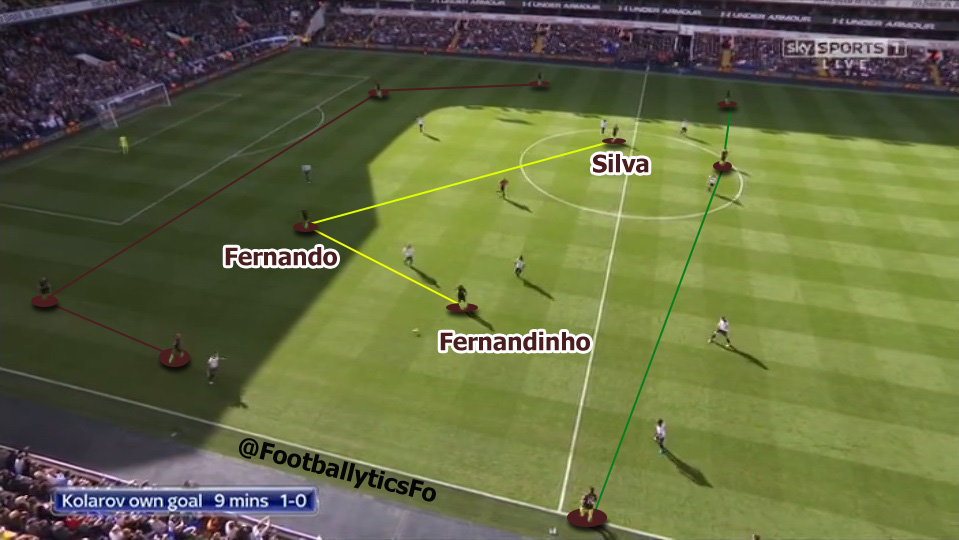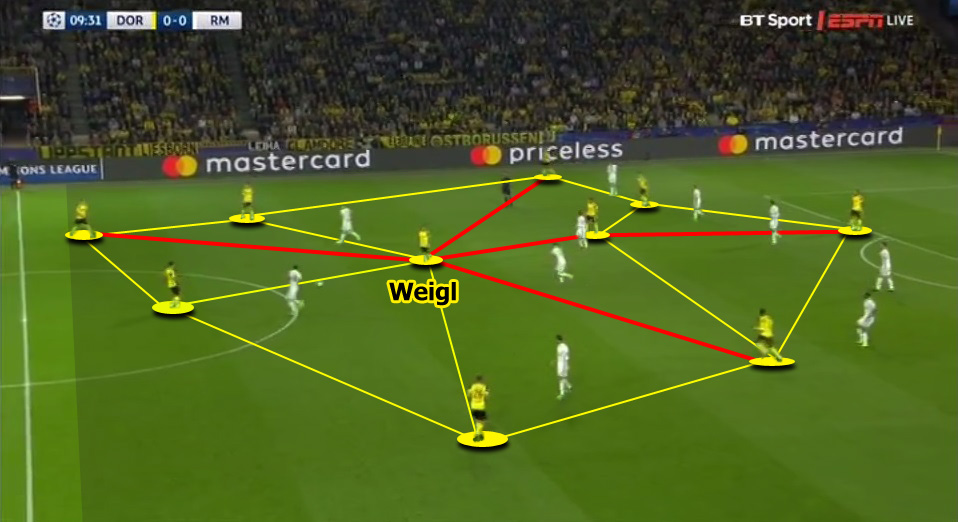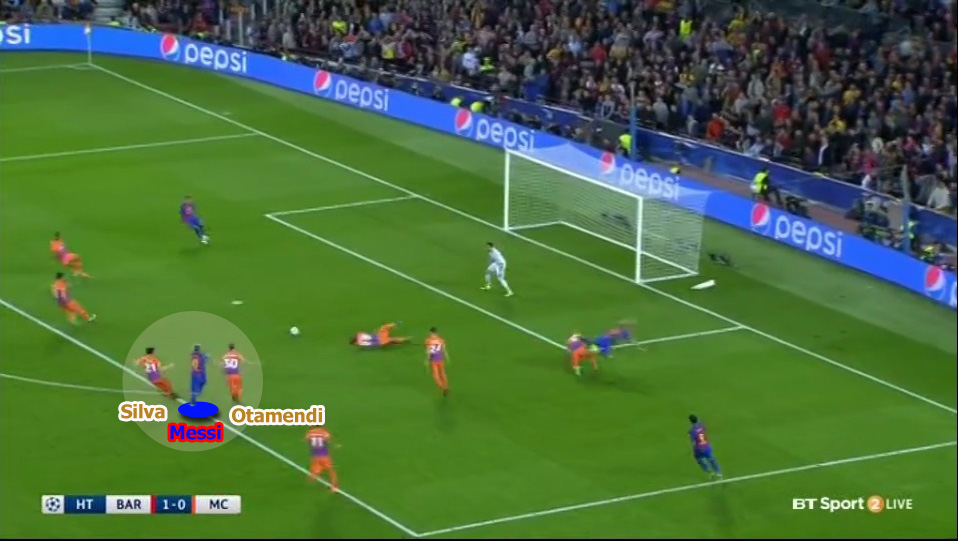After looking into the inside forward, at our next stop in exploring emerging roles in modern football, we will take a look at defensive midfielder position. It is yet another position that was heavily influenced by “juego de posicion” so succesfully implemented by Pep Guardiola at Barcelona. Looking to emulate this success, coaches around Europe adopted their own vision and interpretation of defensive midfielder position. Nowadays we often hear about pivot, half back, deep lying playmaker and so on.
They all describe the same position but different interpretations of it in various systems and phylosophies. Root of this change happened in Mexico with Argentinian coach Ricardo La Volpe at turn of century. As more teams pressed defensive line with two attackers, La Volpe employed a defensive midfielder who would drop between two center backs to build a numerical advantage in order to achieve controlled transition from defensive into the middle third of the pitch. A move known as “salida lavolpiana” or La Volpe’s transition.
Above you can see Mexico under Ricardo La Volpe and “salida lavolpiana” working in practice as defensive midfielder Rafa Marquez drops deep between center backs. They spread out while full backs go higher up the pitch occupying their markers thus creating more space for ball carrier in central position.
However, football trends changed with times and salida lavolpiana needed adjustments. Primarely as a response to formations with three attackers and gegenpressing. With rise of Barcelona, under Pep Guardiola, we have witnessed the development of positional play. To reach the middle third in an organized manner, and avoid opposition that plays high pressing game with three forwards, Guardiola introduced ball playing goalkeepers and his own type of defensive midfielder.
PIVOT,
Sergio Busquets, Xabi Alonso, Fernandinho, Julian Weigl…
ESSENTIAL ATTRIBUTES
Decisions, off the ball movement, ball control, passing, balance, vision, tackling, positioning, communication, work rate
Managers who want to ransition the ball from defensive zone into the middle third in organized manner might have particular requests, however, the basic idea is always the same. The aim is to find a free man between the opposition lines. Transition from defensive into the middle third of the pitch is particularly delicate as ball lost so close to the goal often means immediate chance for opposition. “There is no playmaker in world who can create so many good chnaces so consistently that close to goal as good pressing” are the words from Jurgen Klopp and Guardiola tries to evade that very pressing by passing around it.

Above you see Guardiola’s Manchester City in their defensive zone looking to break the pressing and reach the middle third in controlled manner. It is immediately obvious that players are positioning themselves quite far away from each other. This forces the opposition to cover more ground or employ more players in closing them down. When everything works well, both counter meassures make it easier for Guardiola’s team to reach the middle third.
However, it is futile to look only at the role of defensive midfielder in isolation. Whole team needs to occupy right spaces if the team wants to be successful at keeping the ball and reaching the middle third in organized way against good pressing. The whole goal is to find a free man in between the lines. To be succesfull, all players need high standard of composure on the ball, ability to pass quickly and precisely while moving and changing positions. If executed well, combination of quick passing and movement creates a free man which allows the team to progress further up the pitch into next zone where defending team needs to reorganize and the process repeats.
Screenshot above provides valuable insight into how important decision making of individual player is for this strategy to work. Fernandinho plays a pivot role in this game and exchanges place with Fernando who cleverly recognises this and occupies deeper position. However, Fenandinho is let down by his first touch, then he fails to find free man quickly enough and is cought in possesion. Few seconds later City concedes due to an own goal from Kolarov.
This tells us that even if team is perfectly positioned on the pitch and at least one player is free to receive the pass, the strategy is very much dependant on individual players. However, mistakes happen and that doesn’t mean the strategy is invalid. Just not foolproof.
According to positional play, same strategy that is used in defensive zone is valid in attacking third as well. The idea is always to reach the advantage, be it numerical “2v1, 3v2…) or individual (i.e. Messi against weak full back). Defensive midfielder’s role is thus essentialy still the same.
Depending on manager’s needs a defensive midfielder might have different duties further up the pitch. They might be more conservative as Busquets is sometimes at Barcelona. At times dropping between the center backs to allow full backs go further forward. At times, he might have more active role, similar to that of Weigel at Borussia Dortmund.

Above we can see a still image of Borussia Dortmund in possession against Real Madrid. German team is very narrow even in possession due to their counter pressing strategy. However, Julian Weigl who is the player designated to connect defence and attack, is high up the pitch with the responsability to keep the ball circulation. Being narrow helps Borussia to exchange quick short passes and allows them to catch oppostion in counter pressing if they lose the ball.
Independently of individual manager’s requests, in positional game the goal always remains the same. Players need to occupy their positions, move the ball and progress down the pitch in order to create advantage. It requires lots of skills and is primarely the reason why any Barcelona player under Guardiola, could basically play any position.











